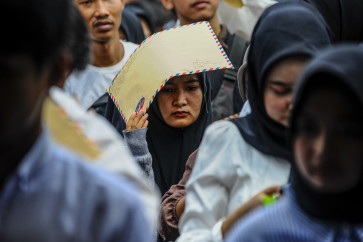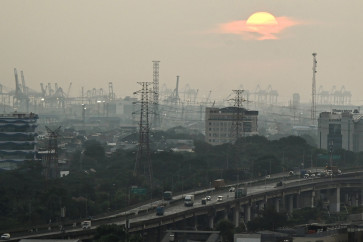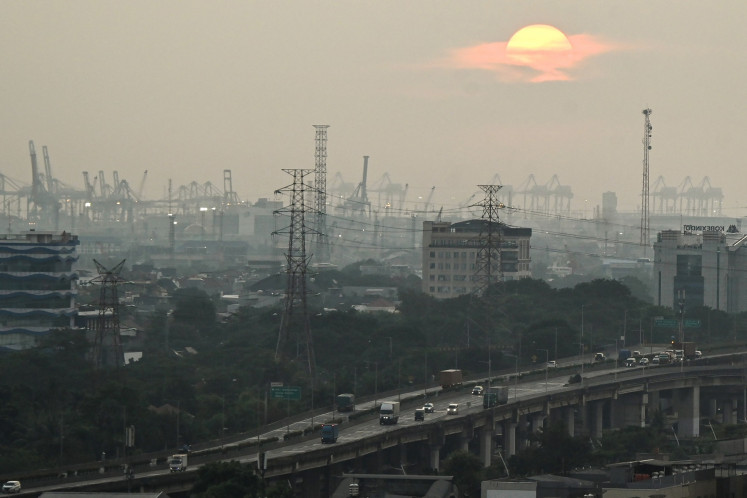Losing Majapahit, piece by piece
Long before the controversial development of the Majapahit Information Center in Trowulan, East Java, came under the media spotlight, thousands of archaeological sites in the area had been damaged
Change text size
Gift Premium Articles
to Anyone

L
ong before the controversial development of the Majapahit Information Center in Trowulan, East Java, came under the media spotlight, thousands of archaeological sites in the area had been damaged. One by one the buildings have disappeared as if eaten by termites.
Indonesia is rich in cultural heritage. In Trowulan village, Mojokerto regency, for example, thousands of archaeological sites are buried in the area that used to be the center of the Majapahit Kingdom. In the Trowulan site, 11 kilometers long and 9 kilometers wide, numerous artifacts and other features are yet to be uncovered.
The Majapahit cultural heritage is also to be found in several other areas such as Sidoarjo, Malang, Pasuruan and Kediri - but all are in poor condition. Only those in Trowulan - all together there are only 15 of them -are still well preserved.
These 15 are the Brahu temple, Gentong temple, Wringin Lawang Gate, Bajang Ratu temple, Tikus temple, Kedaton site, Sentonorejo site, Pendopo Agung Siti Hinggil hall, Putri Campo graveyard, Panjang graveyard, Troloyo graveyard, Segaran pool, Museum Trowulan and Yoni Klinterejo.
One reason these sites are well preserved is their religious element. The Balinese Hindus believe that these are the places where the gods meet. Everyday, hundreds of people perform rituals there, and before elections, some candidates come to ask for blessings and inspiration to help them in their mission.
It was because the area attracted so many visitors that the government wanted to build the Majapahit Information Center, saying it would serve as an educational facility to introduce the Majapahit Kingdom to young people and to attract tourists. It was also expected to benefit the local people because there would be a handicraft center in the compound where they could sell products.
But the project was met with strong opposition from archaeologists from several universities across the country, as well as numerous culture lovers. The protesters argue that the development will damage the sites that are still buried. One art and culture appreciation group, Majapahit Gotrah Wilwatikta, said the development was planned for the very place believed to have been the residences of officials and ministers during the Majapahit era.
After a continuing barrage of protests, underscored by a demonstration by students of the Airlangga University in Surabaya and Gadjah Mada University in Yogyakarta, the government delayed the project and started to look into possibilities for relocating the project.
An activist from Majapahit Gotrah Wilwatikta, Anam Anis, said his group and other concerned people, including archaeologists, had repeatedly protested against the destruction of the Majapahit cultural heritage.
"We often cried, urging the government to pay attention to the Majapahit Kingdom sites being lost due to theft and damage," he said.
Didik Haryadi, 45, a resident of Watu Umpak village, Trowulan district, said the thefts began more than 15 years ago. At that time, around the Sentonorejo site, believed to be the center of the Majapahit Kingdom, many artifacts were found, such as gold coins, jars and jewelry.
"It could be said that wherever we walked, we would find valuable items from the kingdom, which were scattered around," Didik told The Jakarta Post. "If you wanted to get more, you just had to dig three to five meters deep and you would get gold coins or jewelry."
He said that residents who found the valuables had reported the findings to the authorities, but received no response. The relevant authority, the East Java Artifact Preservation Center, reportedly made no effort to preserve the discovered items.
"It was not until the mass media made extensive reports about the thefts and the discovery of thousands of gold coins and pieces of jewelry in Trowulan that they worked to save the valuables. But after that, they forgot their job."
Didik said that most locals believed that taking anything belonging to the Majapahit Kingdom could bring them bad luck, leading to their death, and so returned the valuables to the place from where they took them. But other residents and newcomers did not care, selling the stolen items to antique shops in Bali and other places.
"Because the government did not respond to the discovery of the valuables, they thought that the items did not belong to the government and they just sold them," he said.
People also took bricks from the Majapahit temples or other buildings using crowbars. They simply left the broken stones and washed those that were not damaged, selling them to brokers for Rp 500 a piece (about 5 US cents). They were quite happy with the price because regular bricks at the market cost less than half that amount.
In this way, thousands of sites from the Majapahit Kingdom in Trowulan were damaged and the bricks were used to build roads, schools and other structures.
The former head of the East Java Artifacts Preservation Center, I Made Kusumajaya, complained that the government allocated only a little money to maintain archaeological sites, with his office receiving only Rp 200 million each year in maintenance funds.
He is also hampered by a shortage of human resources to deal with the problem.
The center has more than 700 employees, including about 250 people in Trowulan, some of whom are contractors. In 2007 and 2008, about 200 employees were promoted to become permanent civil servants.









